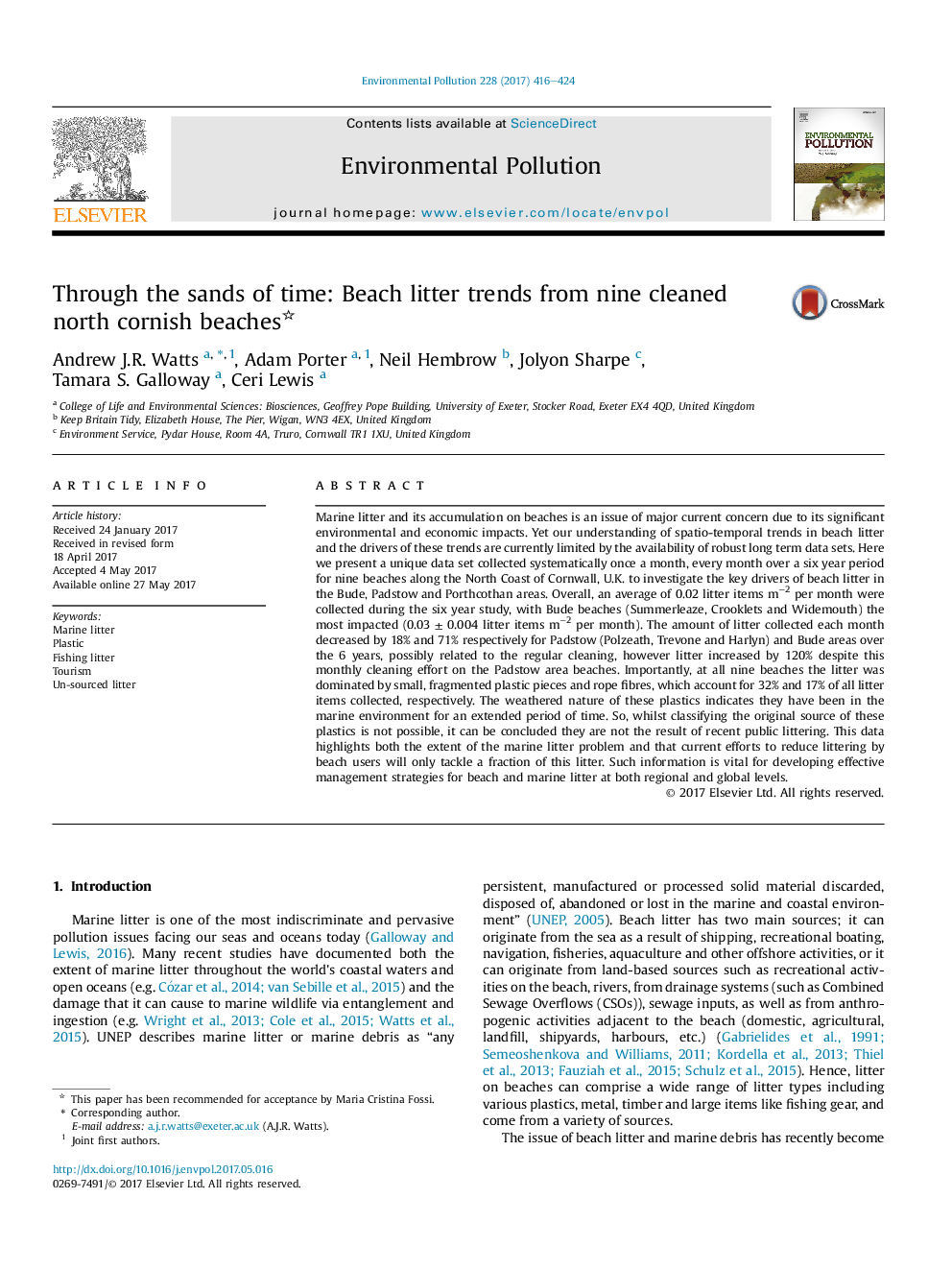| کد مقاله | کد نشریه | سال انتشار | مقاله انگلیسی | نسخه تمام متن |
|---|---|---|---|---|
| 5748890 | 1619145 | 2017 | 9 صفحه PDF | دانلود رایگان |
- Unique and systemically collected beach clean data set from 9 beaches over 6 years.
- The most abundant litter items were various sizes of weather plastic pieces.
- Weathered litter items are difficulty to assign to a specific source.
Marine litter and its accumulation on beaches is an issue of major current concern due to its significant environmental and economic impacts. Yet our understanding of spatio-temporal trends in beach litter and the drivers of these trends are currently limited by the availability of robust long term data sets. Here we present a unique data set collected systematically once a month, every month over a six year period for nine beaches along the North Coast of Cornwall, U.K. to investigate the key drivers of beach litter in the Bude, Padstow and Porthcothan areas. Overall, an average of 0.02 litter items mâ2 per month were collected during the six year study, with Bude beaches (Summerleaze, Crooklets and Widemouth) the most impacted (0.03 ± 0.004 litter items mâ2 per month). The amount of litter collected each month decreased by 18% and 71% respectively for Padstow (Polzeath, Trevone and Harlyn) and Bude areas over the 6 years, possibly related to the regular cleaning, however litter increased by 120% despite this monthly cleaning effort on the Padstow area beaches. Importantly, at all nine beaches the litter was dominated by small, fragmented plastic pieces and rope fibres, which account for 32% and 17% of all litter items collected, respectively. The weathered nature of these plastics indicates they have been in the marine environment for an extended period of time. So, whilst classifying the original source of these plastics is not possible, it can be concluded they are not the result of recent public littering. This data highlights both the extent of the marine litter problem and that current efforts to reduce littering by beach users will only tackle a fraction of this litter. Such information is vital for developing effective management strategies for beach and marine litter at both regional and global levels.
614
Journal: Environmental Pollution - Volume 228, September 2017, Pages 416-424
